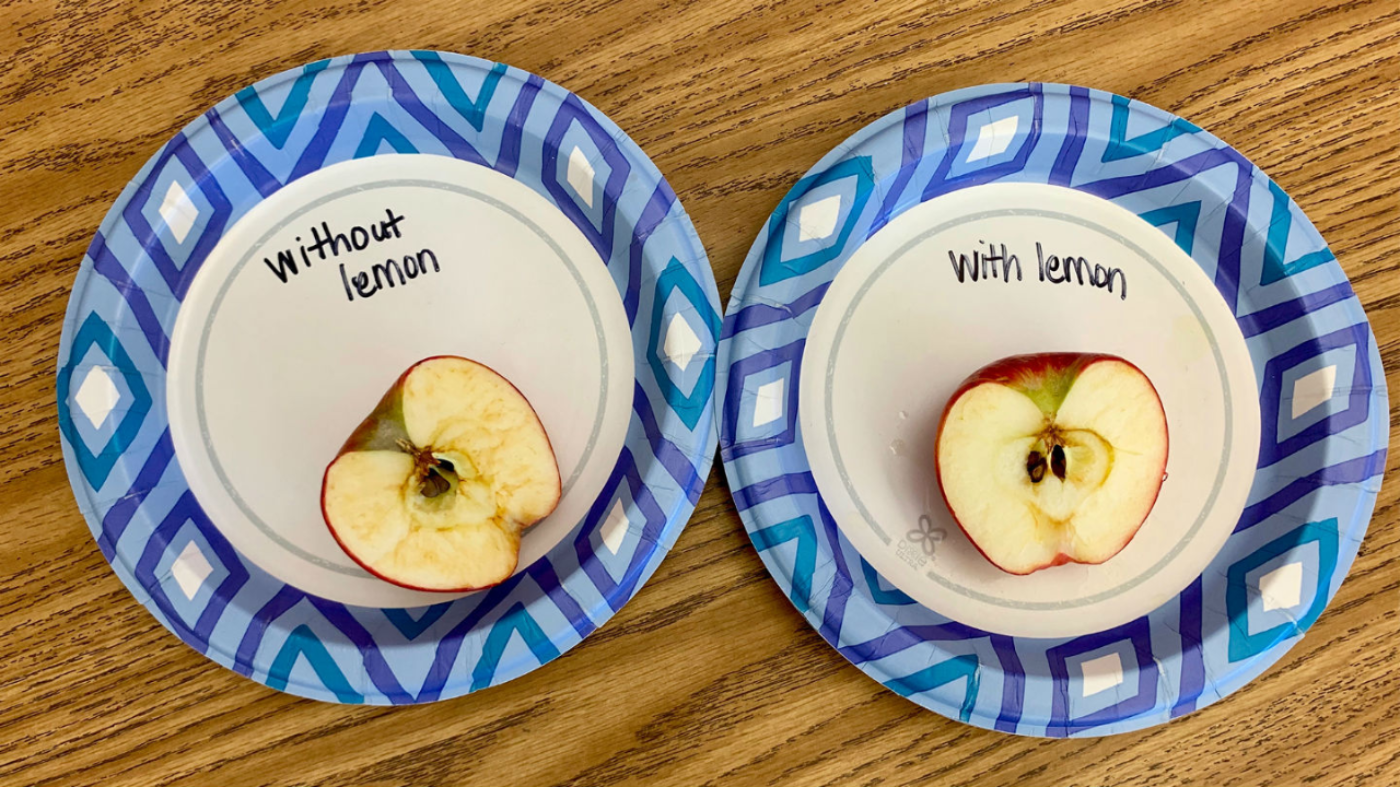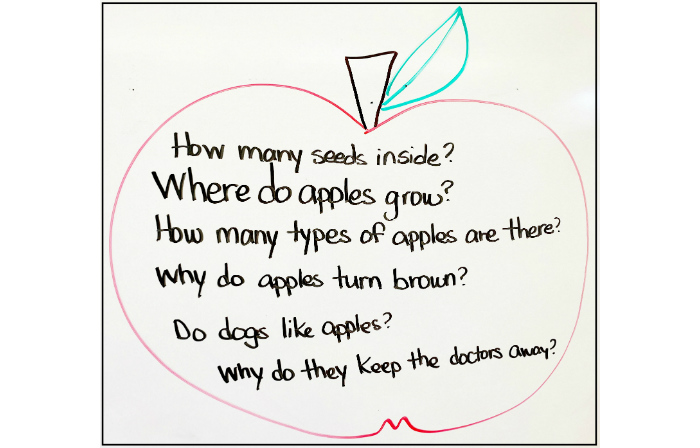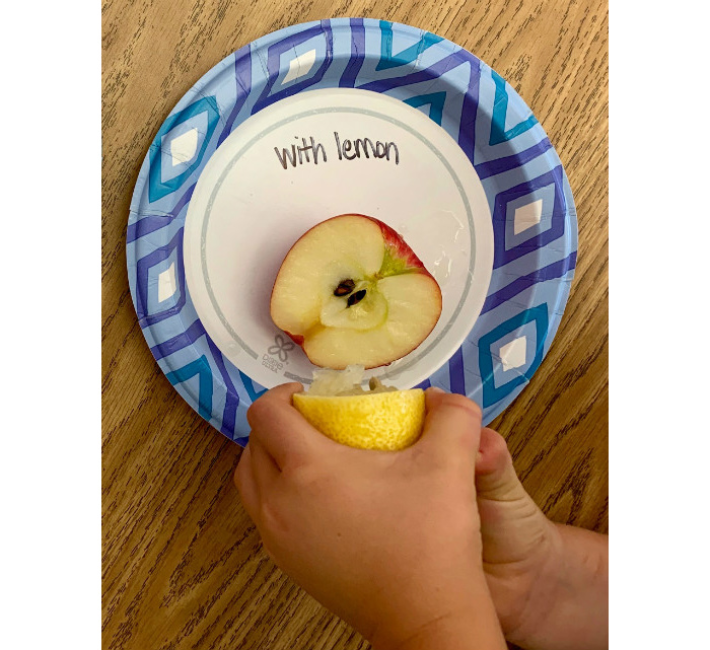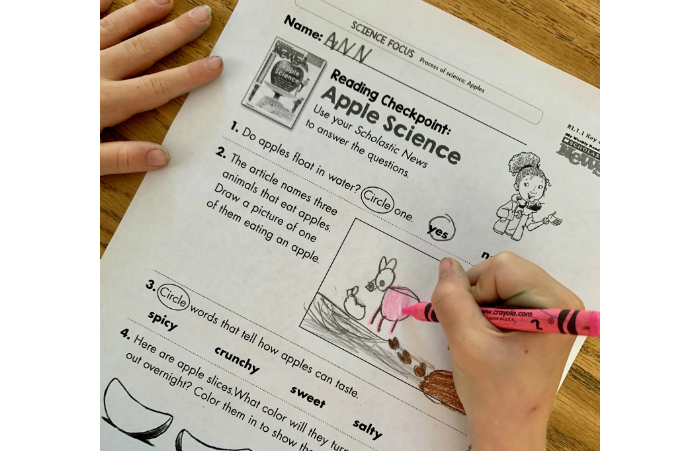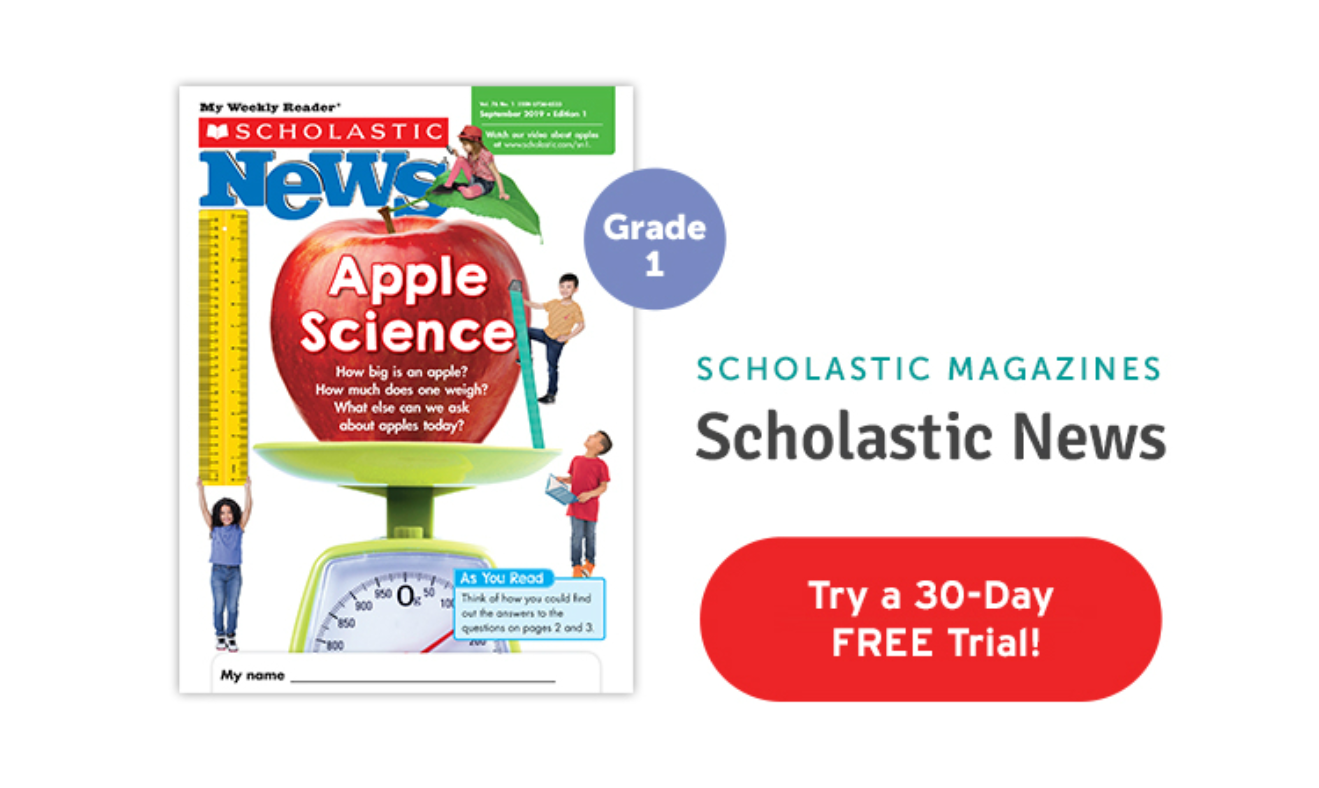Key Takeaways
- Start your lesson with a question that intrigues kids and gets them thinking.
- Then let kids experiment to find out how to keep apples from turning brown.
- Scholastic News for grade 1 has digital resources including activities and ideas to extend each issue.
When you hear the word apple, what do you think of? Back-to-school season, right? Apples are the perfect symbol for this new season with our students!
This month, Scholastic News for grade 1 turns apples into “Apple Science” fun for your first graders!
It inspired a great lesson in my classroom that combined science, reading and writing. I started with the Scholastic News for grade 1 website.
The result? Apple-tastic! Here’s how we did it.
Step 1: Ask questions.
To begin our lesson, I drew a giant apple on the board and asked the students to think of questions they had about apples. It's always interesting to open up a classroom of first graders to questions!
